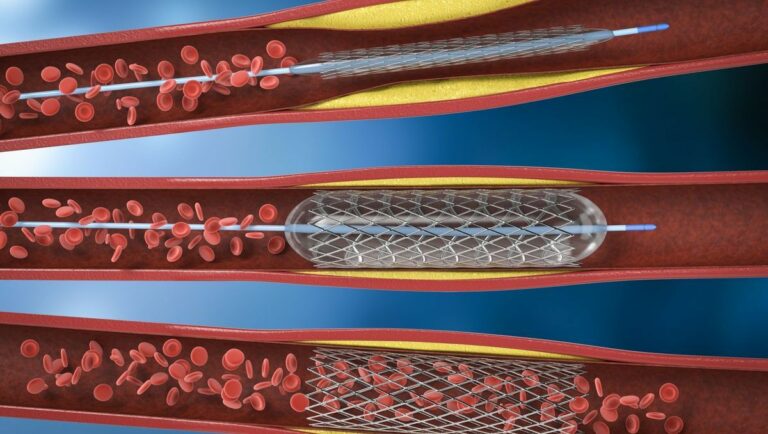Angioplasty: How is the procedure performed?
What is a coronary angioplasty?
Angioplasty is the procedure of resolving a narrowing (stenosis) or blockage of a blood vessel by inflating a balloon catheter inside the vessel. This definition best answers the question of what an angioplasty is.
Stenoses are generally caused by atheromatous plaques and can affect any artery in the human body. When stenoses affect the heart's arteries (coronary arteries), they reduce blood supply to the heart, causing myocardial ischemia.
Coronary angioplasty (PTCA, from the English Percutaneous Transluminal Coronary Angioplasty) involves dilating the stenoses or blockages of the coronary arteries by inflating a balloon. This technique restores adequate blood supply to the myocardium without surgery (coronary artery bypass grafting).
If performed promptly, angioplasty is a life-saving procedure, having reduced mortality by more than four times. For heart attacks, it's the gold standard treatment. Technological advancements, improved post-intervention drug treatments, and operator experience have reduced the need for coronary artery bypass grafting. This cardiac surgery remains necessary for severe coronary artery obstruction or heart valve replacement.
Angioplasty with stent placement
Usually, the cardiologist implants a stent (small tube) in the artery to maintain dilation and restore normal blood flow.
When the interventional cardiologist inflates the balloon, the stent expands and rests against the artery wall. After deflating and removing the balloon and catheter, the stent remains. Various stent types exist, chosen based on the lesion, patient, and associated conditions.
The insertion site is sealed by applying pressure until the blood vessel heals.
How is an angioplasty performed?
The interventional cardiologist makes a small incision to insert a thin catheter into an artery in the groin (femoral artery) or wrist (radial artery).
A local anesthetic is injected before the puncture and catheter insertion. The patient also receives mild intravenous sedation for relaxation and anxiety relief.
The patient doesn't feel catheter movement, though slight discomfort at the insertion site is possible.
The catheter is a long, flexible tube with a small, deflated balloon at its tip.
Inserted into the femoral or radial artery, the catheter is advanced to the heart and into the coronary artery's lumen where the stenosis (narrowing) is located (previously identified by coronary angiography).
The cardiologist monitors the catheter's progress and injects contrast medium through the catheter to visualize the artery on X-ray. The balloon is then inflated at the stenosis, crushing the plaque against the artery wall, restoring blood flow. After removing the stenosis, the balloon is deflated and the catheter withdrawn.
A stent is almost always implanted simultaneously.
Coronary angioplasty is performed under electrocardiogram and blood pressure monitoring to detect complications, though rare.

Angioplasty usually lasts 30-90 minutes. One day of hospital bed rest is needed, keeping the insertion site immobile. Return to work and normal activity is usually possible within a few days.
In what cases is an angioplasty performed?
Coronary angioplasty aims to restore adequate blood flow to the heart muscle, preventing myocardial ischemia (exertional and/or resting angina pectoris, myocardial infarction).
In 15-30% of cases within 6 months, restenosis (re-narrowing) occurs, obstructing blood flow. Repeat angioplasty is often successful and safe. Restenosis can also be treated with a stent.
EXPRESS QUOTE
Would you like more information?
Your health, our priority.
Request your free quote
After an angioplasty
Life after an angioplasty
Patients can typically resume daily life after about a week; those in physically demanding jobs may need more time. Consult your doctor before strenuous activity.
Self-care is crucial. Your doctor can advise on improving cardiovascular health (medication, diet, smoking cessation, exercise). Regular follow-up appointments are essential.